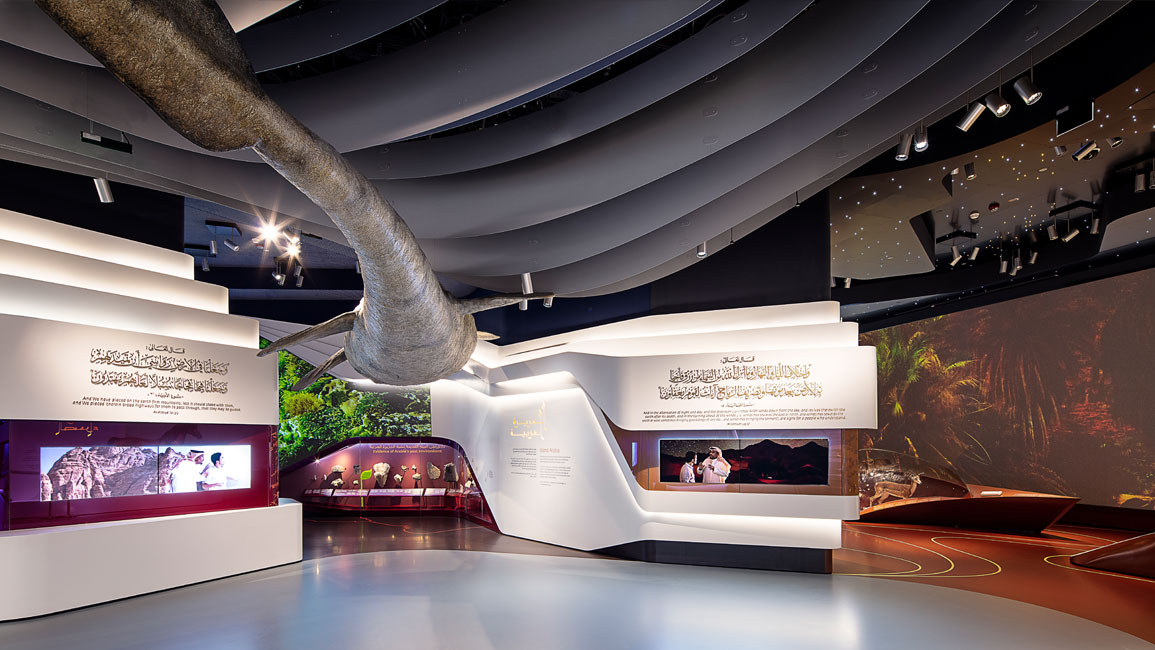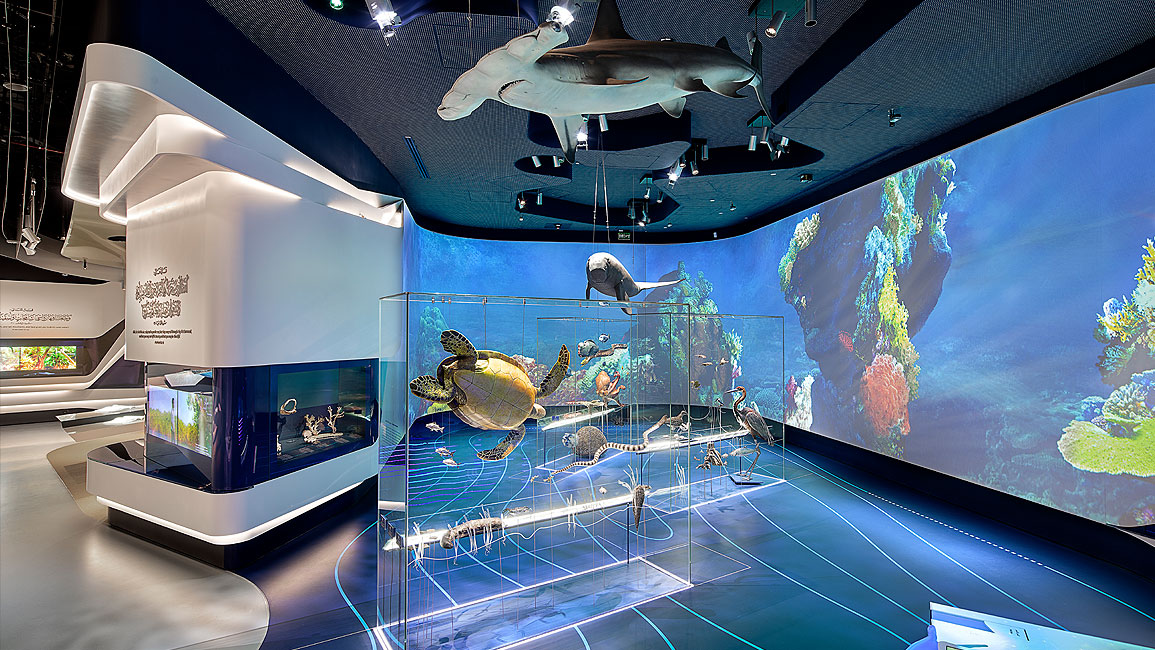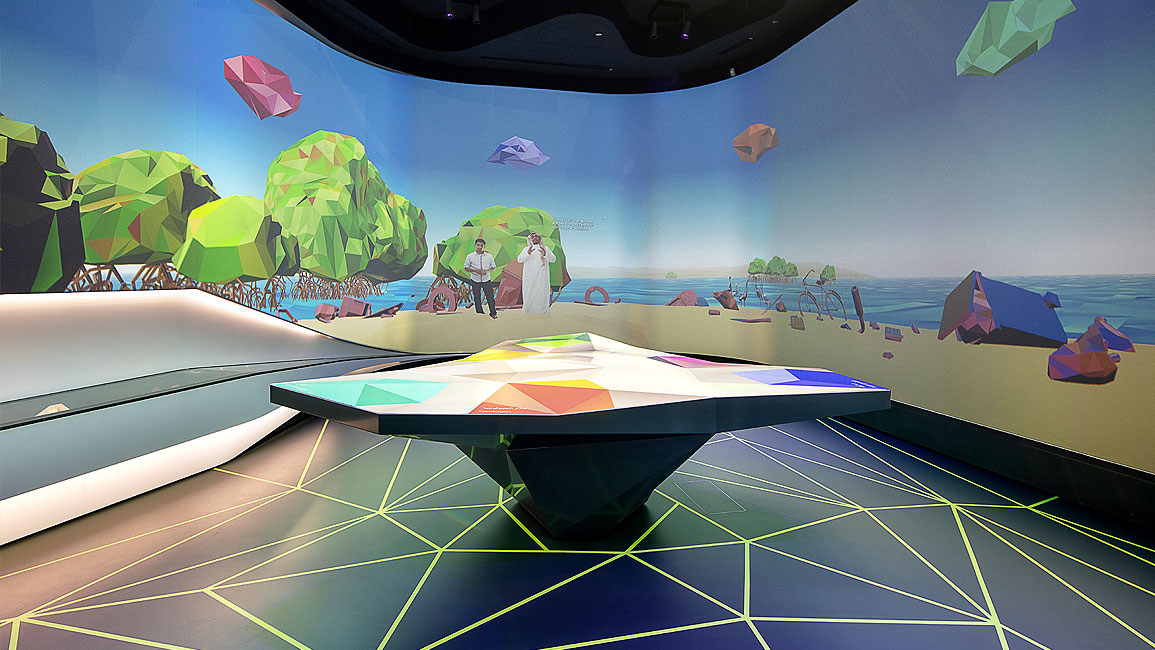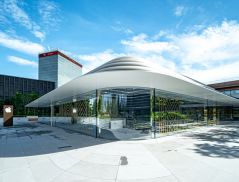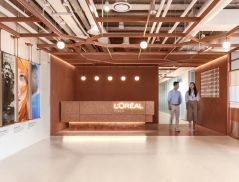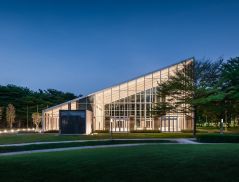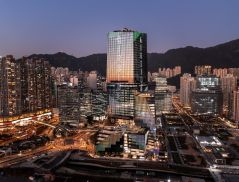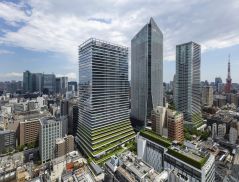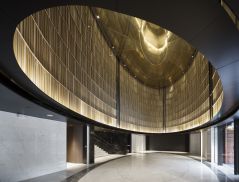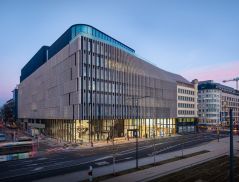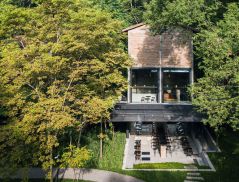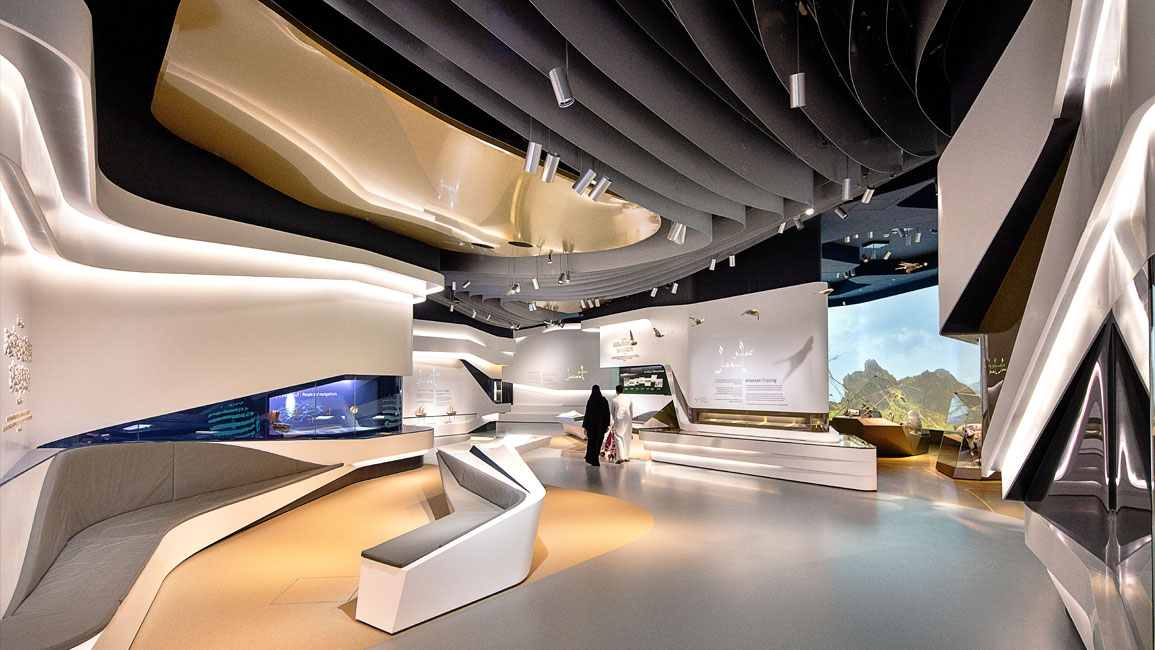
The Arabian Journeys exhibition at the King Abdulaziz Center for World Culture (also known as Ithra, or “cultural enrichment”) in Dhahran, Saudi Arabia, was created to transport visitors across the diverse landscape spaces of the Arabian Peninsula.
Put together by Atelier Brückner, which conceives and designs narrative architecture and spaces for brands, exhibitions, trade fairs and museums, the multimedia journey allows visitors to explore the rural areas, deserts, mountains and seas of Saudi Arabia, while looking back at the prehistory of the Arabian Peninsula and forward towards the challenges of the future.
A truly immersive experience
The permanent exhibition was launched in 2018, but the idea behind it originated in 2010, when the Natural History Museum (NHM) in London challenged international participants to create one thematic room that showcased all of Saudi Arabia’s different habitats.
The NHM was assigned to advise on how this particular gallery in the Center would be used.
Stuttgart-based Atelier Brückner won the competition with their vision to make the exhibition an immersive experience.
Walking into the 1,300m2 space, visitors will notice five “ribbons” made of high-quality mineral material, enclosing and framing several spaces beyond the entrance.
The material, a mix of stone and plastic, was thermoformed and moulded into wavy shapes.
“The Center itself is amorphous, with its pebble-shaped, inter-connected buildings, so we wanted the ribbons to follow a similar organic form,” says Rene Walkenhorst, the project’s lead architect and a partner at Atelier Brückner.
Interestingly, the shape of the Center was not an issue for the team when it came to planning the layout of exhibition, because the gallery space they had to work with was rectangular.
Each ribbon represents a particular theme. It guides visitors out of the central zone and into the individual exhibition areas, each of which has its own thematically arranged focus.
“We wanted very clearly defined areas in which to present different experiences and the different landscapes,” says Walkenhorst.
“Depending on the thematic area you are in, you will notice texts, film projections, or audio-visual effects to give you the feeling of being fully immersed in a specific landscape.
“For instance, in one area, you can experience Saudi Arabia’s mountainous regions by way of a helicopter flight, while in another, you can interact with shoals of fish from the Red Sea.”
Thematically dedicated texts and the dialogue of the two Arab guides (who can be seen in the large-scale film that is projected all around) allow visitors to feel more emotionally connected to the natural settings.


Bringing the space to life with technology
Atelier Brückner’s design team employed a range of technological features to give each theme-based area its unique, futuristic look and feel.
“The initial idea was to give visitors an immersive experience,” Walkenhorst explains.
“Once we had an idea of the experience we wanted to achieve in each of the thematic areas, we looked at how technology could give us that result.
“We then found companies specialising in software development, film production and so on, to help us bring those ideas to life.
“It was a long process of figuring out what worked and what didn’t, and deciding what technologies to go with or do away with.”
And the technological touches are indeed impressive.
In the Island Arabia zone, for instance, visitors can watch a short film showing the geological development of the Arabian Peninsula.
Events in the film are coordinated with a media table that, using 11,000 dynamically moved rods, illustrates the faults caused by plate tectonics. An oversized globe shows the shifting of the plates in time-lapse mode.
Floor graphics and interactive media tables and showcases further bolster the feeling that one really is in specific regions.
For example, with the help of a three-dimensional model of the mountains onto which images are projected, visitors can access the impassable mountain regions of Saudi Arabia.
To read the full story, purchase and download a digital copy of d+a's Issue 109 (April/May 2019) from Magzter.


 Share
Share
